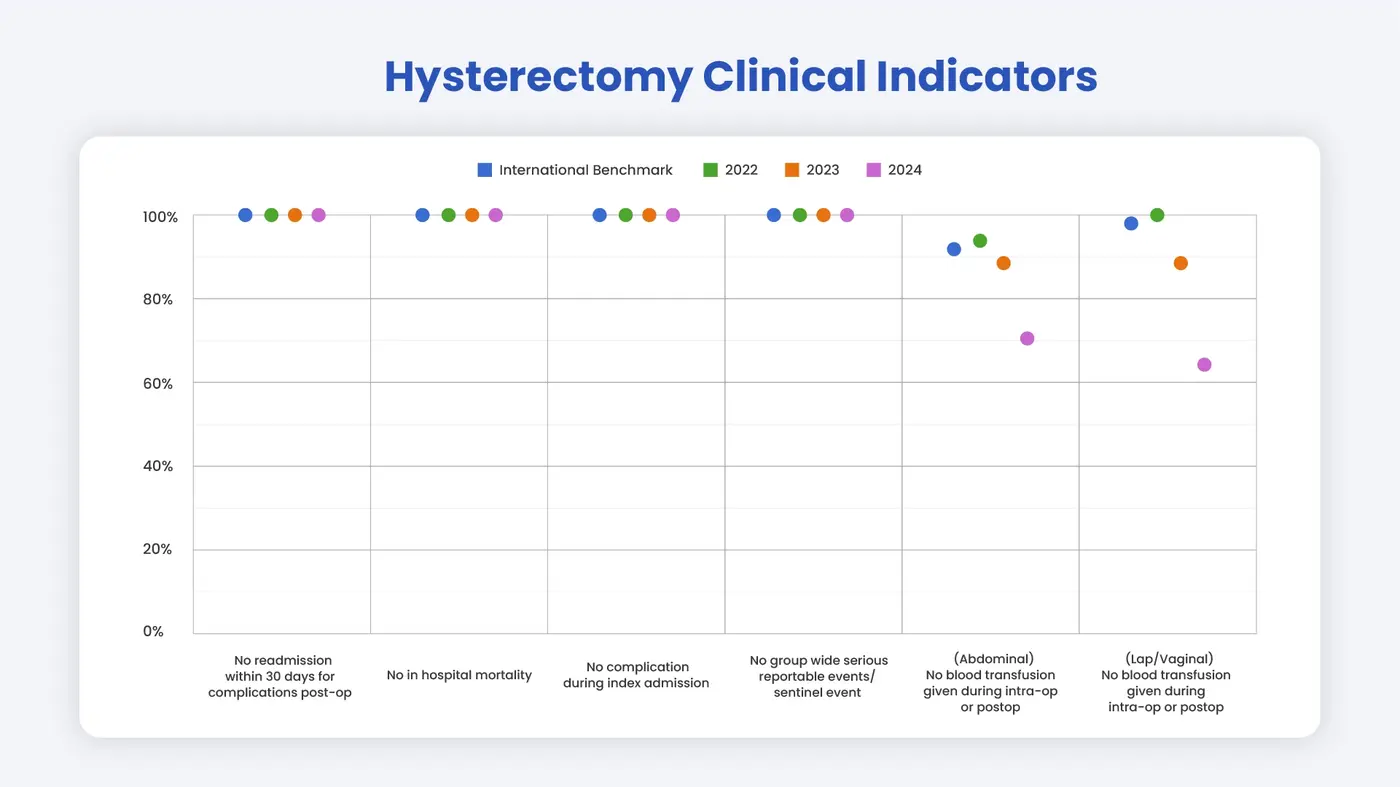Hysterectomy Surgery
What is Hysterectomy?
Hysterectomy is a surgical procedure to remove the uterus (womb). Depending on the case, it can be performed through an abdominal incision, vaginally, laparoscopically, or using robotic-assisted surgery.
✔ Types of Hysterectomy:
- Total Hysterectomy – Removal of both the uterus and cervix.
- Partial (Subtotal) Hysterectomy – Removal of the uterus alone,
leaving the cervix intact.
Why is Hysterectomy Performed?
Doctors may recommend a hysterectomy as a treatment option for various conditions, including:
- Uterine or Cervical Cancer – Depending on cancer type and stage, other treatment options like radiation or chemotherapy may also be considered.
- Fibroids – Non-cancerous tumours that grow in the uterus, causing heavy bleeding, anaemia, pelvic pain, and bladder pressure.
- Endometriosis – A condition where tissue similar to the uterine lining grows outside the uterus, affecting nearby organs such as the ovaries and fallopian tubes.
- Uterine Prolapse – When the uterus slips into the vagina, leading to urinary incontinence, pelvic pressure, and bowel issues.
- Chronic Pelvic Pain or Heavy, Irregular Vaginal Bleeding – If other treatments fail, hysterectomy may be the best long-term solution.
Why Applying VDO Framework to Hysterectomy
At Pantai Hospital Kuala Lumpur (PHKL), we apply the Value-Driven Outcome (VDO) framework to hysterectomy to enhance patient outcomes, optimize costs, and improve quality standards. By tracking surgical complications, recovery time, pain levels, and long-term health impact, we can:
✔ Refine surgical techniques and post-operative care
✔ Minimize unnecessary healthcare costs
✔ Improve patient safety and overall experience
✔ Ensure measurable quality improvements aligned with international benchmarks
Applying the VDO framework makes hysterectomy safer, more effective, and cost-efficient at PHKL.
Key Quality Indicators for Hysterectomy
- No Unplanned Return to the Operating Theatre
✔ A smooth hysterectomy procedure should not require a return to surgery within the same hospital stay.
✔ Achieving this benchmark indicates a successful, complication-free surgery. - No Complications During Index Admission
✔ Tracking complications allows better risk management and surgical improvements.
✔ Identifying and addressing modifiable risk factors leads to better patient outcomes. - No Readmission Within 30 Days
✔ A key indicator of post-operative success and hospital performance.
✔ Prevents unnecessary hospitalizations due to complications or infections. - No In-Hospital Mortality
✔ Monitoring mortality rates ensures adherence to best practices and safety protocols.
✔ Regular reviews and improvement strategies help reduce risks. - No Serious Reportable Events (SREs)
✔ PHKL follows a strict monitoring, evaluation, and corrective action system.
✔ Preventing serious reportable events fosters a culture of continuous improvement and patient safety.
How does Pantai Hospital Kuala Lumpur compare to international benchmarks?






.webp?sfvrsn=20763f7d_21)



.webp?sfvrsn=f2a2c343_12)


